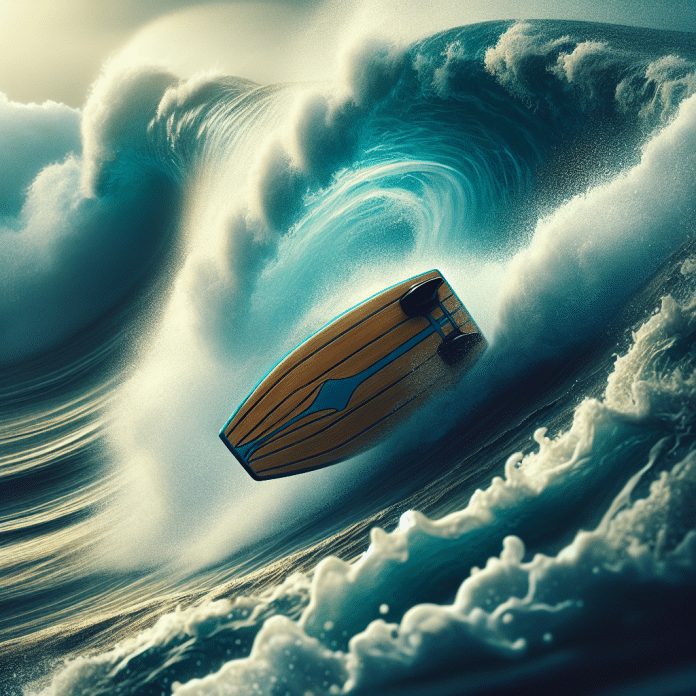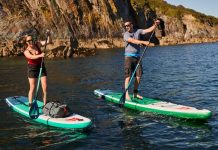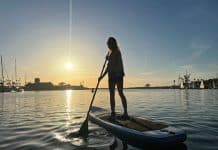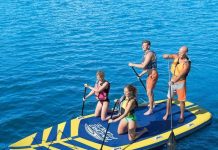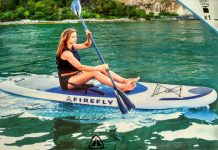Are you ready for an exhilarating adventure in the ocean? Get ready to experience the thrill of bodyboarding as we ride the waves and conquer the mighty sea. Bodyboarding is not just a sport, but a way to connect with nature and embrace the power of the ocean. Join us as we dive into the world of bodyboarding and discover why it has become such a popular activity for adrenaline seekers and water lovers alike. Get your boards ready, because the waves are calling our name!
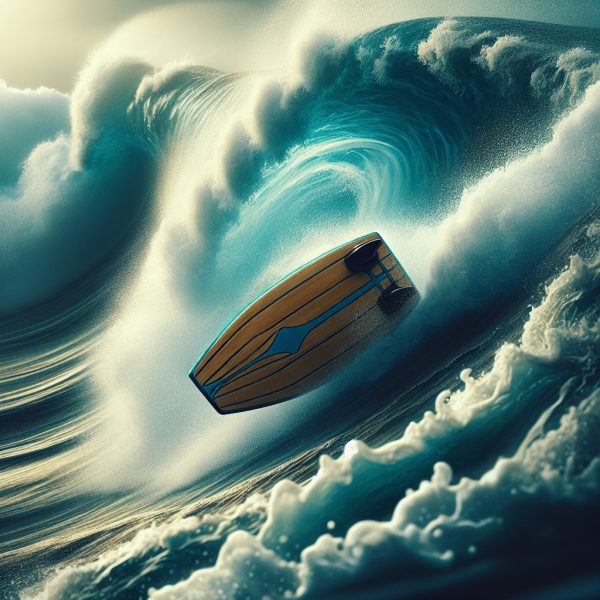
History of Bodyboarding
Origin of Bodyboarding
Bodyboarding, also known as boogie boarding, has a rich and fascinating history that dates back to ancient Polynesia. The origins of this thrilling water sport can be traced back thousands of years, where it was practiced by the Polynesian islanders as a means of transportation and leisure activity. They would ride wooden boards, called paipo, on the waves, using their body as the main source of propulsion. This ancient form of bodyboarding laid the foundation for the modern sport we know and love today.
Introduction of Bodyboarding to the United States
The concept of bodyboarding made its way to the United States in the early 20th century but didn’t gain widespread popularity until the 1970s. It was Tom Morey, an American engineer and surfer, who revolutionized the sport by inventing a lightweight and buoyant board made from polyethylene foam. This invention, known as the “Morey Boogie Board,” quickly gained recognition and sparked a new wave of interest in bodyboarding. The ease of use and accessibility of bodyboards made it appealing to people of all ages and skill levels, further fueling its popularity in the United States and beyond.
Evolution of Bodyboarding Equipment
Over the years, bodyboarding equipment has undergone significant advancements to enhance performance and safety. The basic design of a bodyboard remains the same – a rectangular-shaped foam core with a slick bottom and a deck for kneeling or lying on. However, materials have evolved, with boards now often featuring a reinforced plastic bottom, known as a slick, to increase speed and maneuverability. Additionally, the introduction of fins, specifically designed for bodyboarding, has greatly improved the rider’s ability to catch waves and maneuver through the water. Wetsuits have also become an essential part of bodyboarding gear, providing insulation and protection from the cold water and potential injuries.
Benefits of Bodyboarding
Physical Benefits
Bodyboarding offers numerous physical benefits that make it a fantastic form of exercise. Riding the waves engages multiple muscle groups, including the arms, shoulders, core, and legs. Paddling through the water and maneuvering the board requires strength and endurance, helping to improve cardiovascular fitness and build muscle tone. The constant balancing and stabilizing movements also contribute to improved coordination, agility, and flexibility. Moreover, the resistance provided by the water adds a low-impact element to the workout, reducing the strain on joints and minimizing the risk of injury.
Mental and Emotional Benefits
Not only is bodyboarding a great physical workout, but it also provides numerous mental and emotional benefits. The exhilaration of catching a wave and the sense of achievement that comes with mastering new techniques can boost self-confidence and self-esteem. The rhythmic nature of the ocean and the calming sound of waves crashing can have a soothing and meditative effect, reducing stress levels and promoting relaxation. Furthermore, being out in nature and surrounded by the vastness of the ocean can foster a sense of awe and connection with the world around us, promoting mental well-being and mindfulness.
Social Benefits
Bodyboarding is a social sport that brings people together, whether it’s friends enjoying a day at the beach or joining a local bodyboarding club. It provides opportunities to meet and connect with like-minded individuals who share a passion for riding the waves. Being part of a bodyboarding community offers a sense of belonging and camaraderie, with members supporting and encouraging each other’s progress and achievements. The shared experiences and memories created through bodyboarding foster lasting friendships and a sense of unity.
Types of Bodyboarding Waves
Reef Breaks
Reef breaks are waves that break over rocky or coral reefs. These types of waves often offer challenging and powerful surf conditions, making them popular among experienced bodyboarders. The waves break in a steep, hollow fashion, creating the perfect conditions for barrel rides and critical maneuvers. However, the shallow nature of reef breaks means that wipeouts can be hazardous, requiring skill and caution to navigate safely.
Beach Breaks
Beach breaks occur when waves break over sandy bottoms. They are the most common type of waves and are found along coastlines worldwide. Beach breaks vary in size and shape, offering a wide range of waves suitable for all skill levels. The sandy bottom provides a more forgiving landing surface, making beach breaks ideal for beginners and those looking to improve their skills. They also tend to have longer and more consistent rides compared to reef breaks.
Point Breaks
Point breaks are formed by waves breaking along a headland or point of land. The waves wrap around the point, producing long, peeling waves that offer excellent ride quality. Point breaks are favored by experienced bodyboarders due to their long, continuous rides and the opportunity for more advanced maneuvers. However, the specific shape and configuration of the point can greatly influence the wave’s characteristics, resulting in a wide range of wave types at different locations.
River Waves
River waves are a unique and lesser-known type of bodyboarding wave. These waves are created by the flow of a river, usually through a natural or man-made feature, such as a boulder or dam. River waves vary in size and shape, depending on the water level and the force of the current. Bodyboarding on river waves requires a specific skill set and is often practiced by experienced riders seeking a thrilling and unconventional bodyboarding experience.
Essential Bodyboarding Equipment
Bodyboard
The bodyboard is the most important piece of equipment for bodyboarding. It is typically made of foam and features a slick bottom, a deck for the rider to lie on, and rails for grip and control. The size and shape of the bodyboard depend on factors such as the rider’s weight, height, and skill level. It’s crucial to choose a bodyboard that matches your body type and riding preferences to ensure optimal performance and comfort in the water.
Leash
A leash is an essential safety accessory that attaches the bodyboard to the rider’s wrist or bicep. It prevents the board from getting swept away by the waves or drifting too far from the rider, making it easier to retrieve and reducing the risk of accidents. A leash should be strong, durable, and comfortable to wear, allowing freedom of movement while maintaining a secure connection between the rider and the board.
Fins
Fins, also known as flippers or swim fins, are worn on the rider’s feet and provide additional propulsion and control in the water. They enhance the rider’s ability to paddle, catch waves, and maneuver through the surf. Bodyboarding-specific fins are shorter and more flexible than traditional diving fins, allowing for quick acceleration, tight turns, and increased agility. Choosing the right pair of fins that fit securely and comfortably is crucial for maximizing performance and minimizing fatigue.
Wetsuit
A wetsuit is essential for bodyboarding in colder water or during colder seasons. It provides insulation, keeping the body warm by trapping a thin layer of water between the suit and the skin, which is then heated by body heat. Wetsuits come in different thicknesses, ranging from thin springsuits for warmer conditions to thick full suits for colder climates. It’s important to choose a wetsuit that fits snugly but allows for comfortable movement in order to stay warm and mobile while bodyboarding.
Wax
Wax is used to increase traction and grip on the bodyboard’s deck, allowing the rider to maintain a secure position while riding and performing maneuvers. Applying wax to the board’s deck is a common practice to prevent slippage and ensure stability. Various types of bodyboard wax are available, each designed for specific water temperatures and conditions. Using the appropriate wax for the current conditions will optimize grip and control, enhancing the rider’s overall bodyboarding experience.
Bodyboarding Techniques
Paddling
Paddling is a fundamental technique in bodyboarding that involves using the arms and legs to propel oneself through the water. It is essential for getting out to the lineup and positioning oneself to catch waves. Effective paddling technique requires a combination of strong arm strokes, efficient kicking, and proper body positioning. Timing and coordination are key to maintaining speed and momentum while paddling, allowing the rider to catch waves and maneuver with ease.
Takeoff
The takeoff is the moment when the rider transitions from paddling to riding the wave. As the wave approaches, the bodyboarder needs to position themselves correctly to catch the wave’s energy and generate speed. Timing and placement are crucial for a successful takeoff. The rider must paddle with enough speed to match the wave’s momentum, position themselves in the critical part of the wave, and then quickly transition from a prone position to a riding stance. A well-executed takeoff sets the foundation for a successful ride.
Trimming
Trimming is the art of staying in the pocket of the wave and maintaining a high-speed line down the line of the wave. It involves positioning the bodyboard in the sweet spot of the wave, where the energy is the strongest. By shifting the body’s weight and adjusting the bodyboard’s angle, the rider can control their speed and direction, maximizing the length and enjoyment of the ride. Trimming is a skill that requires practice, experience, and reading the waves effectively.
Bottom Turn
The bottom turn is a pivotal maneuver in bodyboarding that allows the rider to change direction and generate speed. After dropping down the face of a wave, the rider executes a powerful turn at the bottom of the wave, using their fins and body position to redirect the board. This maneuver sets up the rider for subsequent maneuvers and helps maintain speed and control throughout the ride. A well-executed bottom turn not only enhances performance but also allows for a seamless transition into other maneuvers.
Top Turn
The top turn is a dynamic maneuver that involves hitting the lip, or the top part of the wave, and redirecting the bodyboard back down the wave face. It showcases the rider’s ability to generate speed and perform stylish and critical maneuvers. The top turn is executed by shifting weight onto the outside rail and projecting up and out of the wave, utilizing the wave’s energy to perform a sharp and controlled turn. Proper timing, positioning, and body control are essential for executing powerful and visually impressive top turns.
Cutback
A cutback is a maneuver that involves changing direction on the face of a wave by redirecting the bodyboard back towards the breaking part of the wave. It is used to regain speed, create flow, and maintain momentum during a ride. By slightly angling the board and using the rail to carve into the face of the wave, the rider can perform a smooth and fluid cutback, allowing for a continuous and enjoyable ride. A well-executed cutback adds style, variation, and control to a bodyboarding session.
Tube Riding
Tube riding, also known as getting barreled, is the ultimate goal for many bodyboarders. It involves riding inside the hollow part of a breaking wave, as the wave curls over and creates a tube-like structure. Tube riding requires excellent wave selection, positioning, and timing. As the rider enters the tube, they must navigate the barrel while maintaining control and balance. Riding through the tube can be an exhilarating and visually stunning experience, showcasing the rider’s skill and finesse.
Airs and Tricks
Bodyboarding allows for a wide range of aerial maneuvers and tricks that add an extra level of excitement and creativity to the sport. Riders can launch themselves off the lip of a wave, performing spins, flips, rolls, and other acrobatic maneuvers in the air before landing back on their board. These tricks require a combination of perfect positioning, timing, and body control, pushing the limits of what is possible in bodyboarding. Aerial maneuvers provide a platform for individual expression and innovation, making bodyboarding an exciting and evolving sport.
Safety Guidelines for Bodyboarding
Check the Conditions
Before heading out into the water, it’s essential to assess the conditions. Check the surf report, tide tables, and weather forecast to understand the wave size, direction, and strength, as well as potential hazards or changes in weather. It’s also advisable to observe the water for any dangerous currents, rips, or wildlife. Staying informed about the conditions ensures a safer and more enjoyable bodyboarding experience.
Warm Up and Stretch
Like any physical activity, warming up and stretching before bodyboarding can help prevent injuries and improve performance. Dynamic stretches that involve movements similar to those used in bodyboarding, such as arm swings, shoulder rolls, and lunges, can help prepare the body for the demands of the sport. Warming up allows the muscles to loosen and increases blood flow, making them more resilient and flexible during the session.
Use the Right Equipment
Using the appropriate bodyboarding equipment is crucial for safety. Ensure that the bodyboard is the correct size and type for your body and skill level. Check that the leash is securely attached to both your wrist or bicep and the bodyboard to prevent separation. Fins should fit snugly without causing discomfort or restricting movement. Investing in a well-fitting and appropriate wetsuit will provide insulation and protect against the cold water. Choosing the right equipment minimizes the risk of accidents and maximizes performance.
Respect Other Surfers and Swimmers
When bodyboarding in crowded areas, it is essential to show respect and consideration for fellow surfers and swimmers. Always be aware of your surroundings and follow proper surf etiquette. Yield to other riders on the wave, avoid collisions by maintaining a safe distance, and be mindful of your positioning to prevent obstructing others’ rides. Respect the lineup and wait your turn, and be courteous to swimmers by avoiding crowded swim areas. A friendly and respectful attitude ensures a positive and harmonious bodyboarding experience for all.
Be Aware of Marine Life
The ocean is home to various marine creatures, and it’s important to be mindful and respectful of their presence. Stingrays, jellyfish, and other marine animals may inhabit the waters where you are bodyboarding. Be aware of any local warnings or signs and familiarize yourself with common marine life in the area. If you encounter marine life while bodyboarding, maintain a safe distance and avoid disruptive or harmful behavior. By respecting the delicate balance of the marine environment, you can contribute to its protection and conservation.
Competitive Bodyboarding
World Bodyboarding Championships
The World Bodyboarding Championships (WBC) is the pinnacle of competitive bodyboarding, showcasing the best athletes from around the globe. The WBC features both men’s and women’s divisions, with riders competing in a series of events held in various locations worldwide. The championship highlights the incredible skill, creativity, and athleticism of bodyboarding’s top performers. Spectators and fans can witness thrilling maneuvers, high-flying aerials, and incredible tube riding as riders battle it out for the world title.
Professional Bodyboarding Associations
Professional bodyboarding associations play a vital role in organizing and promoting competitive bodyboarding events. The International Bodyboarding Association (IBA) and the Association of Professional Bodyboarders (APB) are two prominent organizations dedicated to advancing the sport and supporting professional bodyboarders. These associations oversee the development of the sport, implement competition rules and guidelines, and provide a platform for showcasing talent and fostering growth within the bodyboarding community.
Famous Bodyboarders
Throughout the history of bodyboarding, numerous talented individuals have made a significant impact on the sport. Some of the most famous bodyboarders include Mike Stewart, Ben Player, Damian King, Isabela Sousa, and Neymara Carvalho. These athletes have achieved remarkable success in professional competitions, pushing the boundaries of what is possible on a bodyboard. Their dedication, skill, and innovation have inspired countless bodyboarders around the world and elevated the sport to new heights.
Popular Bodyboarding Destinations
The Wedge, California
The Wedge, located in Newport Beach, California, is renowned for its massive shorebreak waves that reach epic proportions, especially during south swells. This iconic bodyboarding destination attracts thrill-seekers from around the world who are eager to experience the exhilaration of riding towering waves and challenging themselves in the powerful shorebreak. The unique wedge-shaped jetty amplifies the incoming swells, creating monstrous waves that offer a thrilling and awe-inspiring bodyboarding experience.
Teahupo’o, Tahiti
Teahupo’o, widely regarded as one of the heaviest waves in the world, is a paradise for experienced bodyboarders seeking the ultimate challenge. Located in Tahiti, French Polynesia, Teahupo’o is known for its incredible power, massive barrels, and sharp reef break. Bodyboarders navigate the treacherous wave as it detonates over the shallow reef, pushing their skills and courage to the limit. Teahupo’o provides a playground for experienced watermen and showcases the raw beauty and sheer force of nature.
Pipeline, Hawaii
Pipeline, on the North Shore of Oahu, Hawaii, is a legendary wave that needs no introduction. It is considered one of the world’s most iconic and demanding waves, attracting top bodyboarders, surfers, and spectators alike. The perfectly formed, hollow barrels of Pipeline offer an ideal canvas for bodyboarding maneuvers that push the boundaries of the sport. Riding Pipeline is a culmination of skill, technique, and fearless commitment, making it a dream destination for bodyboarding enthusiasts.
Shark Island, Australia
Located just off Cronulla Beach in Sydney, Australia, Shark Island is a world-class bodyboarding wave that demands respect and skill. This reef break delivers heavy, fast-breaking waves that barrel powerfully over the shallow reef. Riders must navigate the treacherous sections and tight tubes, showcasing control, precision, and plenty of courage. Shark Island has long been a favorite among Australian bodyboarders, attracting both locals and visitors who crave the challenge of conquering its powerful barrels.
Nazare, Portugal
Nazare, Portugal, is famous for its monstrous and powerful waves, which have been known to reach record-breaking heights. While Nazare is predominantly associated with big wave surfing, it also offers incredible opportunities for bodyboarding. The steep drop-ins and massive walls of water create a thrilling playground for experienced bodyboarders looking to challenge their skills on the face of these gigantic waves. Nazare pushes the limits of bodyboarding, providing an unforgettable and adrenaline-fueled experience.
Bodyboarding Communities
Online Bodyboarding Forums and Websites
The online world has brought bodyboarding enthusiasts together through various forums and websites dedicated to the sport. These platforms provide a space for bodyboarders to connect, share experiences, discuss techniques, and seek advice. Websites such as bodyboarding.com, bodyboardersclub.com, and bodyboardhq.com offer forums, news updates, equipment reviews, and other valuable resources for the bodyboarding community. These online communities have become a valuable tool for connecting with fellow bodyboarders, staying informed, and expanding knowledge about the sport.
Local Bodyboarding Clubs and Groups
Joining a local bodyboarding club or group is an excellent way to connect with fellow bodyboarders and participate in organized events and outings. These clubs provide a supportive environment for riders of all levels, from beginners to experienced bodyboarders. Local clubs often organize beach cleanups, coaching clinics, and friendly competitions, fostering a sense of community and camaraderie among members. Being part of a bodyboarding club or group not only allows for shared experiences and learning opportunities but also contributes to the growth and development of the sport at a local level.
Environmental Impact and Conservation
Responsible Waste Disposal
Bodyboarders, like all beachgoers, must be mindful of their impact on the environment and practice responsible waste disposal. This includes properly disposing of trash and recyclables in designated bins, minimizing litter, and respecting local regulations. Using reusable water bottles, avoiding single-use plastics, and choosing eco-friendly sunscreen are simple yet effective steps toward reducing waste and protecting the marine environment for future generations to enjoy.
Protecting Marine Life
Bodyboarders should strive to minimize their impact on marine life and respect the delicate ecosystems they share. Avoiding unnecessary contact with coral reefs and underwater habitats, as well as refraining from feeding, touching, or harassing marine animals, ensures their protection and well-being. Being aware of designated protected areas and following guidelines set by marine conservation organizations helps preserve these natural treasures and allows marine life to thrive.
Supporting Coastal Conservation Efforts
Getting involved in coastal conservation efforts is an impactful way for bodyboarders to give back to the environment they love. Participating in beach cleanups, volunteering for local environmental organizations, and supporting campaigns focused on marine conservation help protect beaches, oceans, and the diverse ecosystems they support. By engaging in conservation initiatives, bodyboarders can actively contribute to the preservation of the natural beauty and resources that make their sport possible.
In conclusion, bodyboarding has a rich history that spans thousands of years, from its origins in ancient Polynesia to its modern-day popularity worldwide. This exciting water sport offers numerous physical, mental, and social benefits, making it a favorite among water enthusiasts of all ages. With various types of waves and a wide range of equipment and techniques to master, bodyboarding provides endless opportunities for thrilling rides and creative expression. It is important to always prioritize safety by following guidelines, respecting the environment, and being aware of the conditions and others in the water. Whether enjoying the challenging waves of Reef Breaks or exploring extreme destinations like Teahupo’o, bodyboarding is a sport that fosters community, adventure, and a deep connection with the ocean.

